从蒙特维多看到的阿雷纳尔火山, 哥斯达黎加 Arenal Volcano seen from Monteverde, Costa Rica (© Lukas Bischoff/Getty Images)
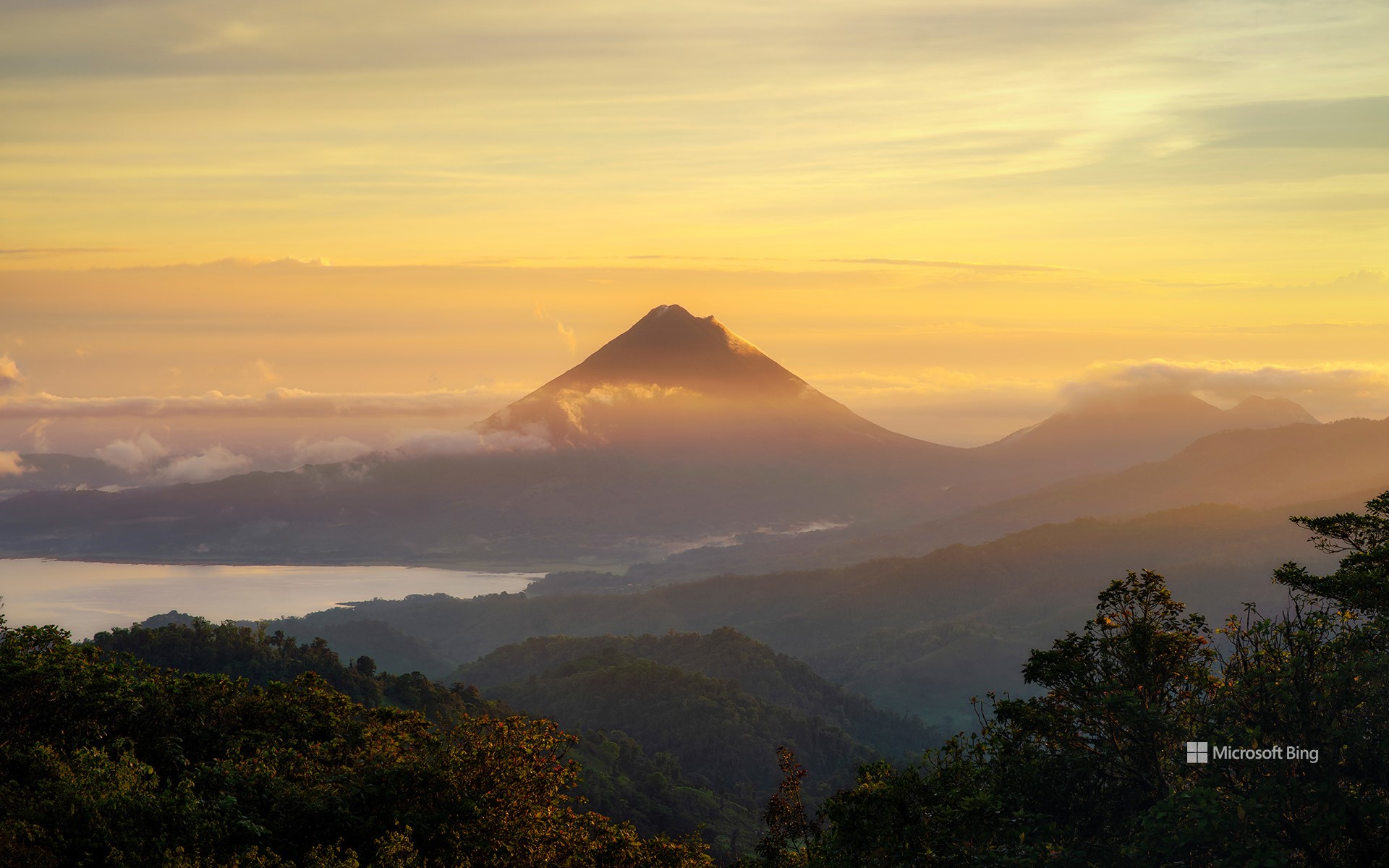
从蒙特维多看到的阿雷纳尔火山, 哥斯达黎加 Arenal Volcano seen from Monteverde, Costa Rica (© Lukas Bischoff/Getty Images)
睡美人 A sleeping beauty
睡美人
热带国家哥斯达黎加在向你招手!图中展示的圆锥形的阿雷纳尔火山高达5437英尺,屹立于周围的热带雨林以及该国最大的湖泊阿雷纳尔湖之上。1968年,在一次大规模的喷发中,这座沉睡的火山咆哮着苏醒了,当时的岩石飞溅了半英里多。而最近一次的大规模火山活动发生在2010年,如今,这座曾被熔岩照亮过山峰正处于休眠状态。对于观鸟者而言,阿雷纳尔火山国家公园是一个必游之地,公园内拥有500多种鸟类,除此之外,该公园还是各种动植物的家园,包括赤短角鹿、美洲狮、白脸卷尾猴、兰花、蝎尾蕉和蕨类植物。高高的阿雷纳尔火山俯瞰着这些热带树木,形成了一副壮观而美丽的风景。
Arenal Volcano, Costa Rica
Greetings from tropical Costa Rica! The conical Arenal Volcano rises to an impressive height of 5,437 feet, standing tall above the surrounding rainforest and Lake Arenal, the largest lake in the country. The sleepy mountain roared to life in a massive 1968 eruption that buried about 6 square miles under rocks, lava, and ash and devastated three villages. The last significant volcanic activity there took place in 2010, and the once lava-lit peak is currently dormant. With over 500 species of birds, Arenal Volcano National Park is a must-visit location for birdwatchers. The park is also home to a diverse range of flora and fauna, including red brocket deer, pumas, white-faced monkeys, orchids, heliconias, and ferns. Arenal makes for an imposing and beautiful sight, towering over the tropical trees.
阿雷纳尔火山,蒙泰韦尔德,哥斯达黎加 Arenal Volcano seen from Monteverde, Costa Rica (© Kevin Wells/Getty Images)
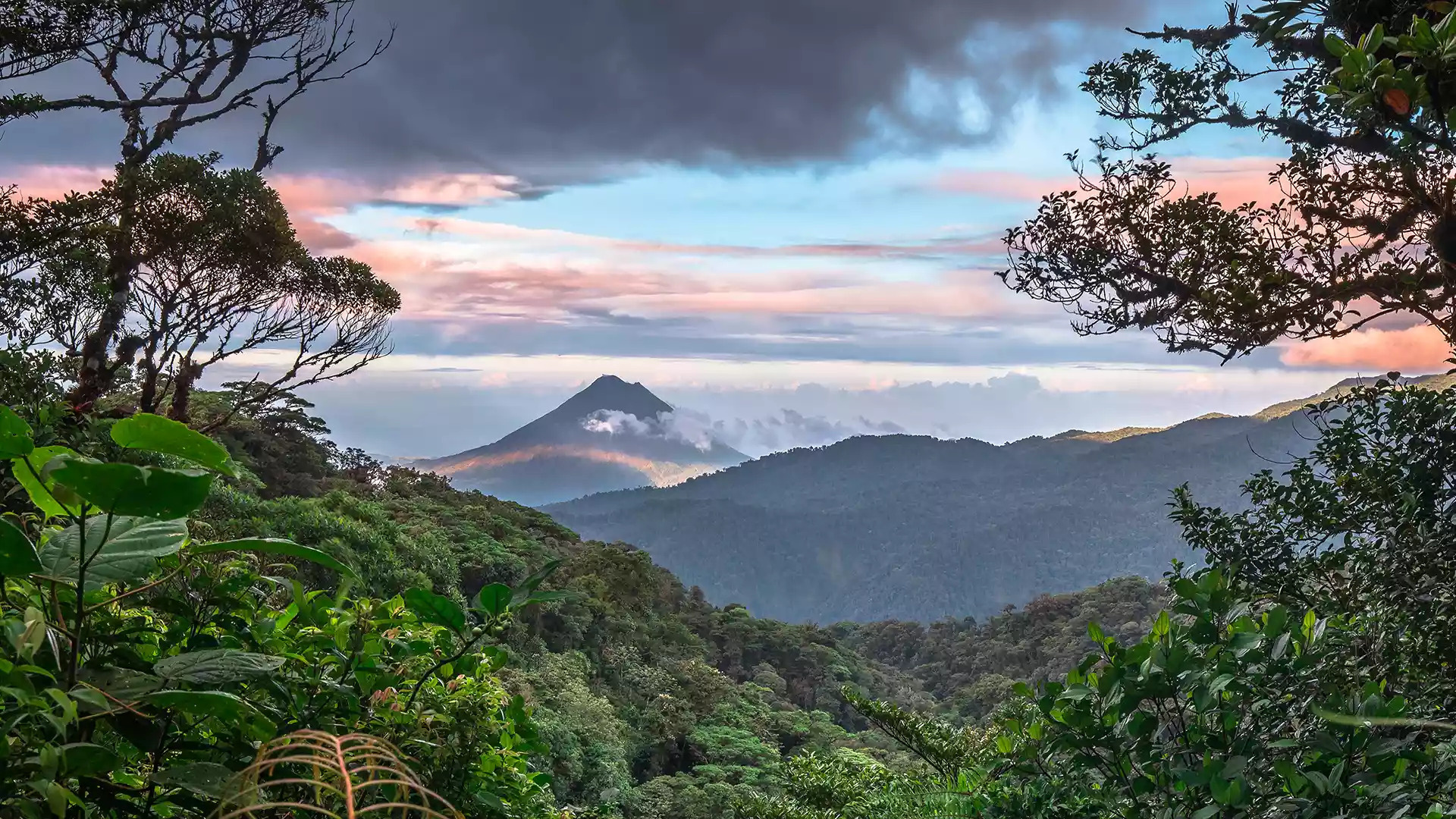
阿雷纳尔火山,蒙泰韦尔德,哥斯达黎加 Arenal Volcano seen from Monteverde, Costa Rica (© Kevin Wells/Getty Images)
为了每个人,保护地球的生物多样性 Protecting Earth's biodiversity for everyone
世界生物多样性日
今天是世界生物多样性日,也是个回顾生物多样性在人类历史发展和续存过程中的关键作用的机会。从细菌、基因到整个生态系统,生物多样性囊括所有形式的生命,包括珊瑚礁、雨林和海洋环境等。我们的水、食物、药品、衣服、住所和能源都依赖于健康的生态系统。
在地方生态系统对世界生物多样性的影响方面,哥斯达黎加的蒙特维多云雾森林是个完美范例。这片森林是哥斯达黎加约一半生物的家园,占世界生物多样性的2.5%。今天,我们可以认真思考人类与世界生态系统的关系,并努力成为更好的地球管家。
International Day for Biodiversity
It’s International Day for Biological Diversity, a day to celebrate the variety of life on Earth in all its forms, from bacteria, plants, and animals to entire ecosystems like coral reefs and rainforests. All living things within each ecosystem are interconnected, and we rely on healthy ecosystems for our water, food, medicines, clothes, energy, and shelter. But many species are threatened with extinction and ecosystems are being destroyed, which mean Earth’s rich biodiversity is in decline.
Our homepage image shows Costa Rica’s Monteverde Cloud Forest, home to about half of all species in the country, including more than 2,500 types of plants and 400 bird species. Here you’ll find jaguars and pumas living alongside sloths, howler monkeys, and the endangered resplendent quetzal. This forest alone represents about 2.5% of the world’s biodiversity, the perfect ambassador for today’s event, which calls on us to rethink our relationship with nature and work to be better stewards of the Earth.
蒙特维德云雾森林中的吊桥,哥斯达黎加 Hanging bridge in Monteverde Cloud Forest, Costa Rica (© Dmitriy Burlakov/Getty Images)
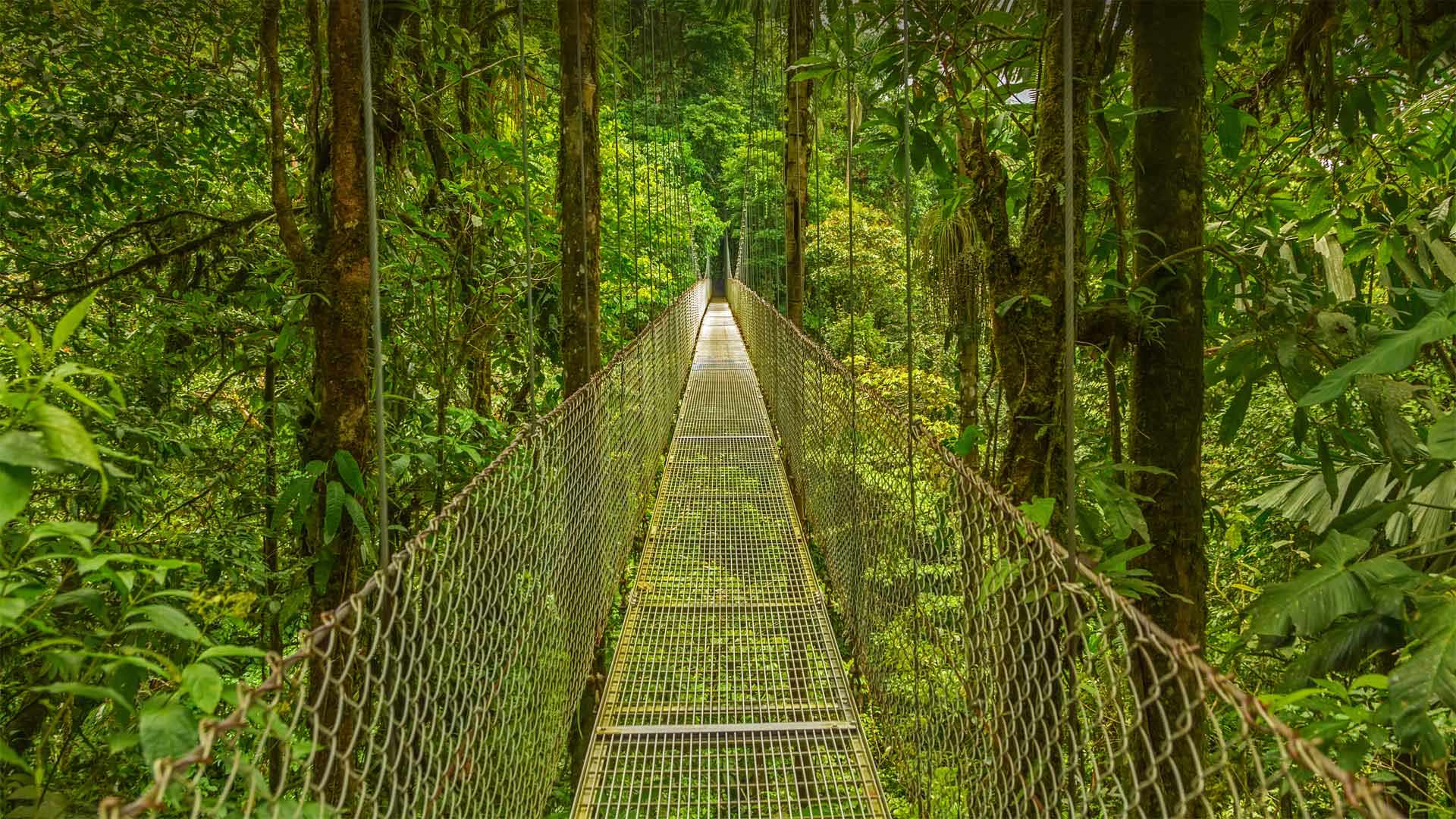
蒙特维德云雾森林中的吊桥,哥斯达黎加 Hanging bridge in Monteverde Cloud Forest, Costa Rica (© Dmitriy Burlakov/Getty Images)
上面的空气怎么样? How's the air up there?
Monteverde Cloud Forest in Costa Rica
Today we're taking a walk through the clouds to visit one of the most beautiful and biodiverse places on the planet. Costa Rica's Monteverde Cloud Forest is in the Tilarán mountain range 5,000 feet above sea level. Hundreds of different animal species and thousands of insect and plant species call the forest home. Diligent nature lovers could count nearly 700 different types of butterflies and 500 different species of orchids during a visit. Famous in the scientific community, the forest also attracts more than 70,000 tourists a year.
You may be wondering, what exactly is a 'cloud forest?' Different than a rainforest, they're forests high enough above sea level to be covered by persistent mist and fog generated by the forest's own evaporating moisture. This makes for a damp and humid, yet cool environment. Generally tropical, they're pretty rare. Only 1% of the current global woodland is considered true cloud forest. Entirely dependent on an area's local climate, it is expected that many of the 736 locations currently identified as cloud forests will be strongly impacted and altered in the coming years. Monteverde, in fact, is known as the location where the first climate-related species extinction was recorded—in the 1980s, the golden toad fell victim to a parasitic fungus that spread into the area due to the changing climate.
哥斯达黎加蒙特维德云林
今天,我们将在云层中漫步,参观地球上最美丽、生物多样性最强的地方之一。哥斯达黎加的蒙特维德云林位于海拔5000英尺的蒂拉兰山脉。数百种不同的动物物种和数千种昆虫和植物物种称之为森林之家。勤奋的自然爱好者在一次参观中可以数出近700种不同类型的蝴蝶和500种不同种类的兰花。这片森林在科学界享有盛誉,每年也吸引了70000多名游客。
你可能想知道,“云林”到底是什么与雨林不同的是,它们的海拔高度足以被森林自身蒸发水分产生的持续雾所覆盖。这就形成了一个潮湿而凉爽的环境。通常是热带地区,它们非常罕见。目前全球只有1%的林地被认为是真正的云林。完全取决于一个地区的当地气候,预计目前被确定为云林的736个地点中的许多将在未来几年受到强烈影响和改变。事实上,蒙特维德是20世纪80年代记录的第一个与气候相关物种灭绝的地方,金蟾是一种寄生真菌的受害者,这种真菌由于气候变化而传播到该地区。
La Selva生物站热带雨林树冠上的黑嘴巨嘴鸟,哥斯达黎加 Black-mandibled toucan in the rainforest canopy of La Selva Biological Station in Costa Rica (© Greg Basco/Minden Pictures)
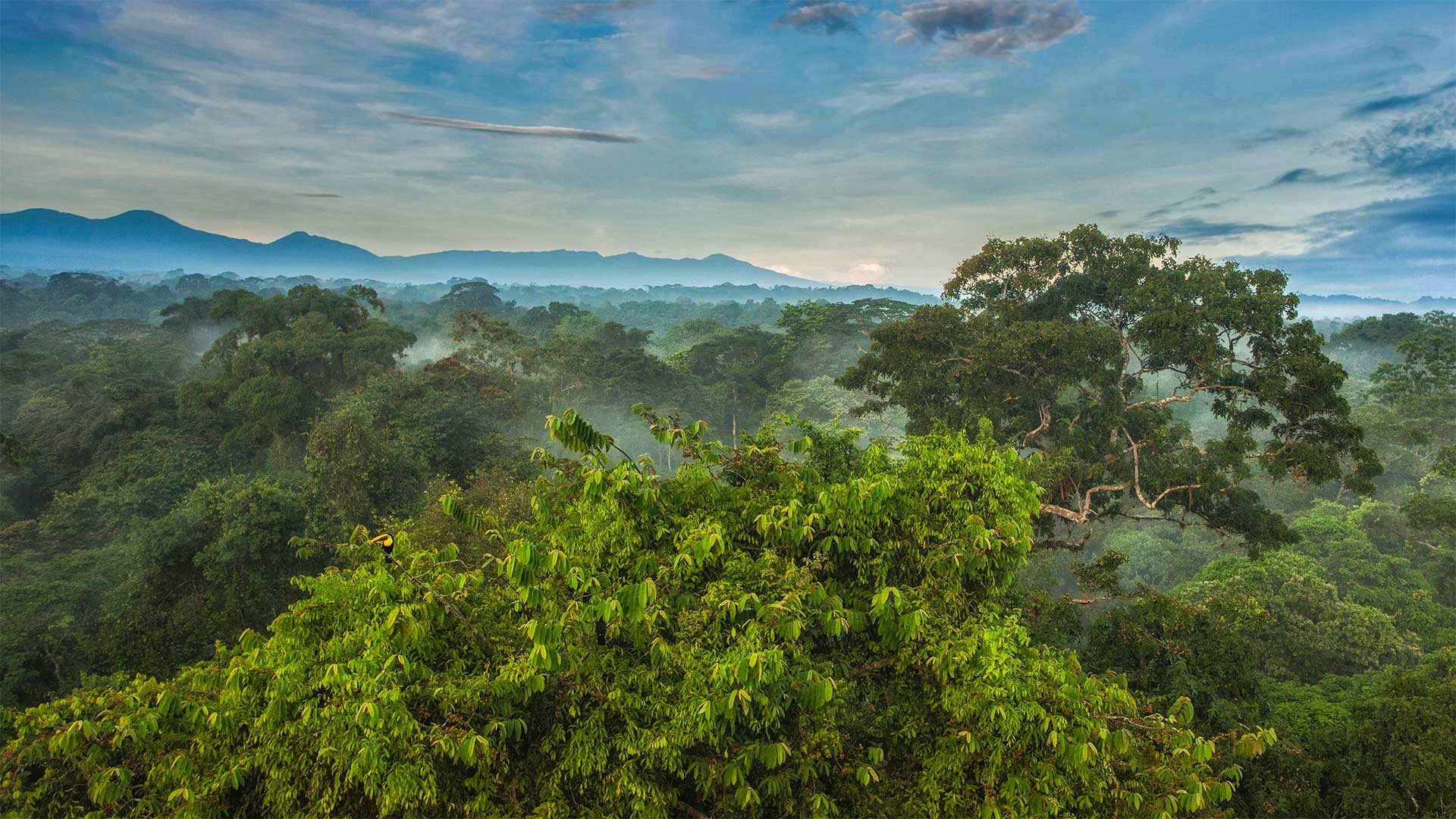
La Selva生物站热带雨林树冠上的黑嘴巨嘴鸟,哥斯达黎加 Black-mandibled toucan in the rainforest canopy of La Selva Biological Station in Costa Rica (© Greg Basco/Minden Pictures)
Bird's-eye view on World Environment Day
For World Environment Day today we're in northeastern Costa Rica, a nature lover's paradise. The UN established World Environment Day in 1974 to encourage awareness and action for the protection of the environment. It begins with research, which is exactly what happens in this pristine corner of the planet. The misty canopy of forest pictured here is part of La Selva Biological Station, an internationally renowned center for tropical forest research that's associated with universities and research institutions from the United States, Costa Rica, and Puerto Rico.
The scientists chose a prime location to conduct their studies. Covering nearly 4,000 acres, this is one of the most biologically diverse ecosystems in the world. Researchers and students here at La Selva Biological Station can study at least 2,000 species of plants, 125 species of mammals, 87 species of reptiles and tens of thousands of insects, arachnids, and other arthropods. And don't forget the 470 species of birds. Can you spot the black-mandibled toucan in our image?
世界环境日鸟瞰
今天是世界环境日,我们来到哥斯达黎加东北部,一个热爱自然的天堂。联合国在1974年设立了世界环境日,以鼓励保护环境的意识和行动。它从研究开始,这正是发生在地球这个原始角落的事情。这张薄雾密布的林冠照片是La Selva生物站的一部分,这是一个国际知名的热带森林研究中心,与美国、哥斯达黎加和波多黎各的大学和研究机构有联系。
科学家们选择了一个绝佳的地点进行研究。占地近4000英亩,是世界上生物多样性最强的生态系统之一。拉塞尔瓦生物站的研究人员和学生可以研究至少2000种植物、125种哺乳动物、87种爬行动物和数以万计的昆虫、蛛形纲动物和其他节肢动物。别忘了470种鸟类。你能在我们的照片中认出黑色下颚巨嘴鸟吗?
卡惠塔国家公园的海岸线,哥斯达黎加 The shoreline of Cahuita National Park, in Costa Rica (© Greg Basco/Minden Pictures)
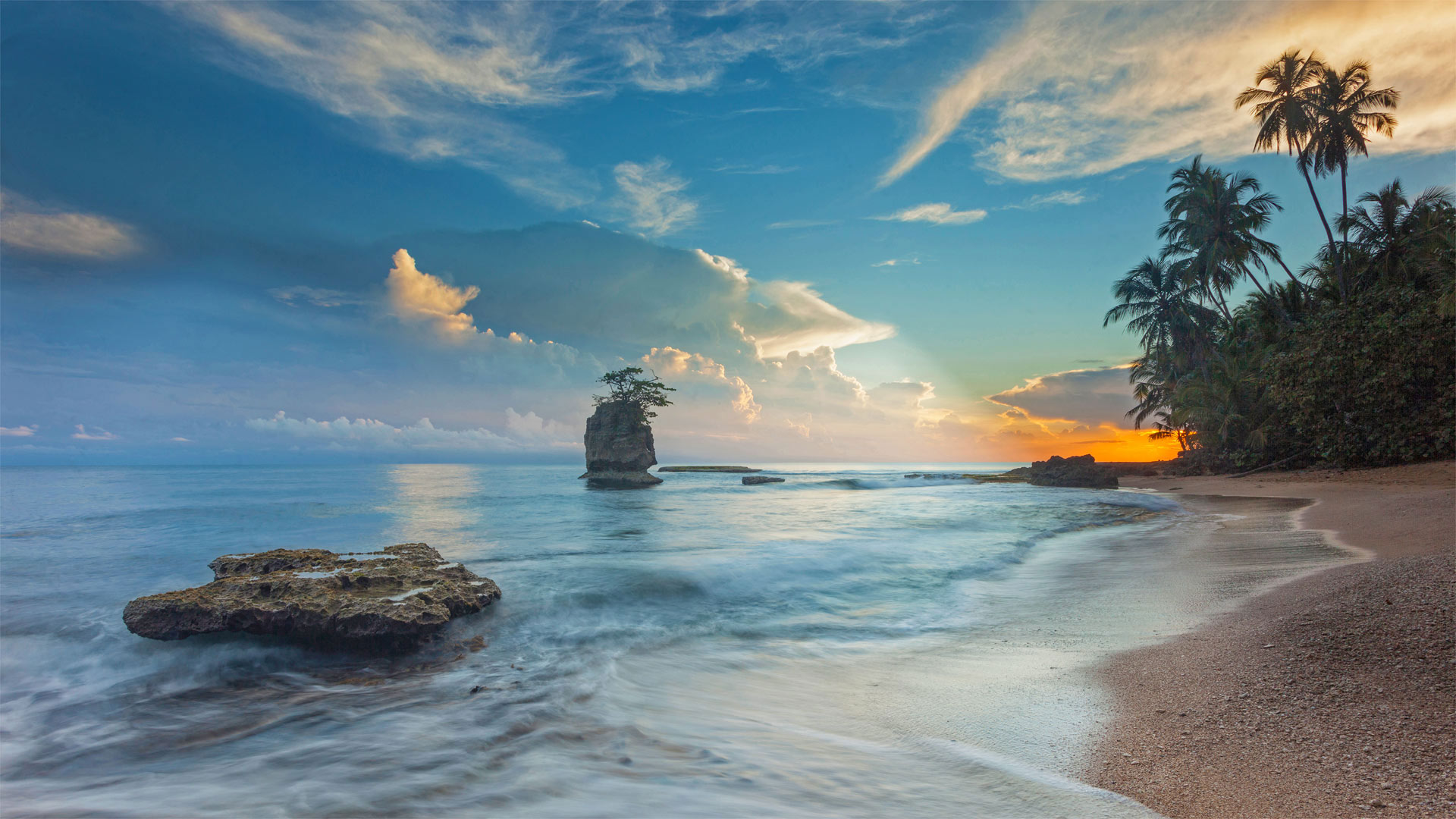
卡惠塔国家公园的海岸线,哥斯达黎加 The shoreline of Cahuita National Park, in Costa Rica (© Greg Basco/Minden Pictures)
Longer days mean warmer sand
Today we're hitting the beach in Costa Rica's Cahuita National Park because, well, just take a look at this place. If the sun gets too intense, we might take a stroll into the park's lowland wet forest where, if we're lucky, we'll see sloths, toucans, and howler and capuchin monkeys; or maybe we'll encounter armadillos, coatis, iguanas, and tamanduas (anteaters). After that, we'll take a dip in the Caribbean waters offshore to marvel at coral reefs, sea turtles, and hundreds of species of fish.
But of course, it is still summer here in North America, and we have plenty of local options for a day at the beach. Thousands of miles of ocean and lake shoreline are waiting to be explored, including coastlines in 85 US national parks (the National Park Service started protecting our seashores and lakeshores in 1930). The National Oceanic and Atmospheric Administration estimates the US shoreline at 95,471 miles, with the Great Lakes delivering the most contiguous shores at 4,530 miles (more than the West or East Coasts). Granted, not every shoreline is sandy, but with nearly 100,000 miles to choose from, we're confident you'll locate a suitable spot to lounge in your chaise this summer.